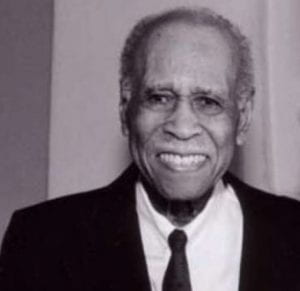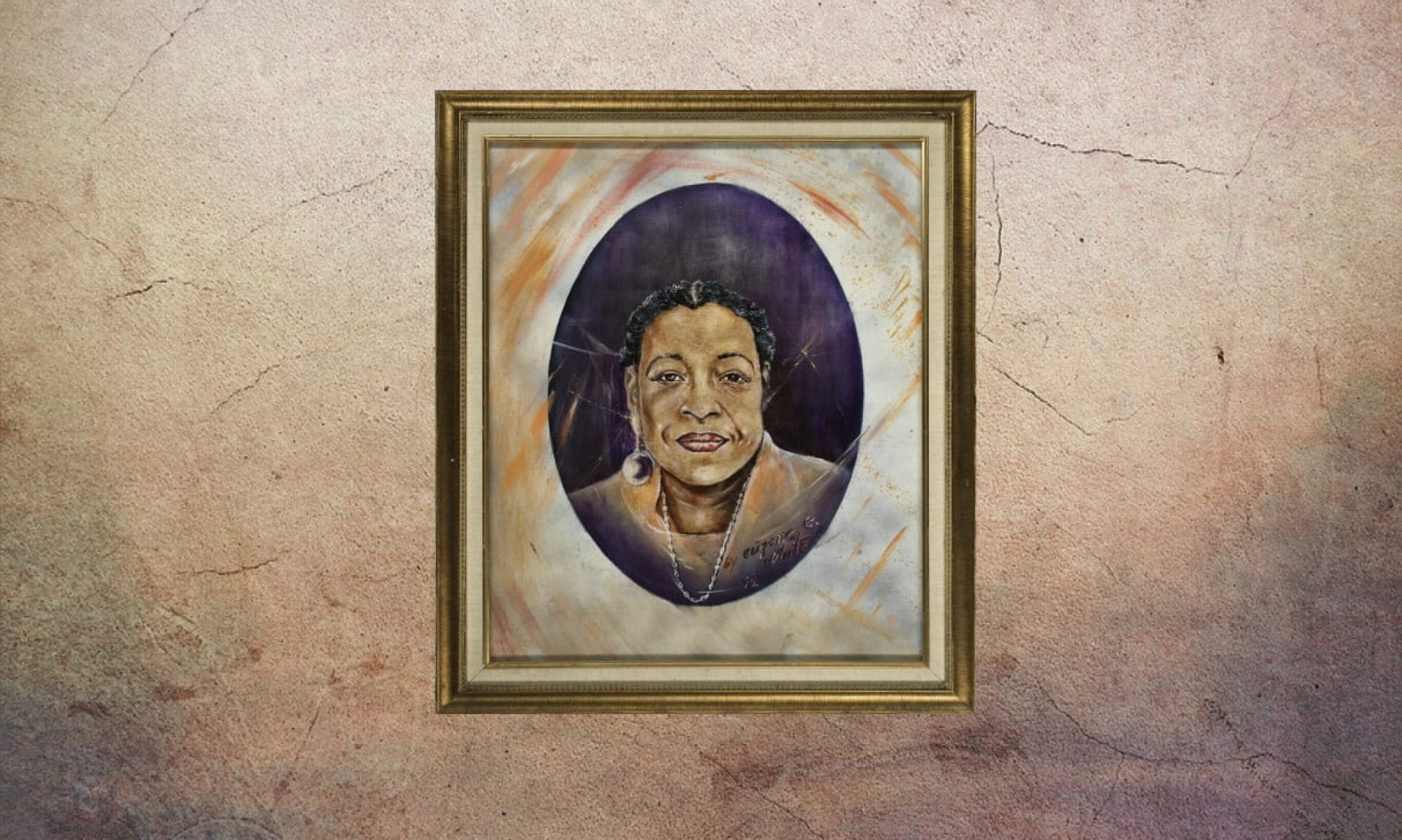
Edward Henry Alley, Jr., known as Eddie Alley, was one of the Fillmore’s leading big band drummers for decades. Alongside his brother, Vernon Alley, who was an equally celebrated bassist, Eddie Alley’s musical prowess helped break barriers between white and black audiences. Alley is one of the many changemakers on the walls of the Ella Hill Hutch Community Center because of his great impact on the Fillmore community in San Francisco.
Named after his father, Eddie Alley, Jr., was born on December 19, 1910, in Minneapolis, Minnesota. During his childhood, he was forced to move multiple times as his father searched for a well-paying job to sustain their family. They first moved from Minnesota to Illinois, then to Nevada, and finally, when Eddie was 13, they settled in San Francisco. Upon their arrival, the Alleys first lived in the Potrero Hill District before moving to the Fillmore.
The schools in the Fillmore were drastically different from the ones that Eddie attended back east, which were predominantly white. After graduating high school in December of 1929, Alley had planned to attend college but was unable to go because the separation of his parents caused him to have to work to help his family during the Great Depression.
From a young age, Alley had been fascinated by the drums. At Daniel Webster Elementary, he entered a competition for hopeful young drummers to win free lessons on how to properly play the drums. Despite never having formal experience, Alley won. Unfortunately, as Alley got older, he had to forgo his lessons to work to help support his family.
Alley has often credited his love for music to the times he saw musicians like Duke Ellington at the Prince and Orpheum Theaters. When Alley graduated from high school, he started working at Topsy’s Roost, where he played his drums to accompany phonograph records until the main band would play. Once onstage, he would cater to the needs of each of the bands he played with and sometimes they would even invite him to sing with them on stage. Eddie’s first goal as a musician was to play at Topsy’s Roost. In order to do this, he needed to join the musicians’ union, which required him to take an exam. He passed the exam and started playing at Club Alabam on Post Street, and also began to play at independently contracted parties. When he played at the club, he would be compensated with three dollars and a hot meal. Alley later formed his own band, Eddie Alley and his Gentlemen of Rhythm, and they began playing at clubs all over San Francisco.
At the famous Bop City jazz club, Alley played alongside Johnny Mathis, who also grew up in the Fillmore District before becoming an international star singer. Alley was proud of the progress Mathis had made, and reminisced about the days when they sang together: “We were poor, so any one who lived behind us was really poor! . . . But when he was first getting started, he sang with me a few times.” Later, he was given the opportunity to work for Billie Holiday and perform for President John F. Kennedy. When it came to Alley’s music, the barrier of race did not deter him; he played in both white and black clubs and was the first black performer to go on the stage of the Fillmore Auditorium.
In the middle of his musical career, Alley realized that working as a musician was not a practical job for maintaining a steady income. He had a family and four kids to take care of and a home to pay for, so Alley seized an opportunity to work for the Metropolitan Life Insurance Company (MetLife). During the 1940s, the insurance company would only hire blacks if they worked in the kitchen or as an elevator operator. Alley was given an elevator operator uniform, and was told that he would never be promoted. In 1947, he was the first black person to be promoted clerk at the company after he went straight to the vice president of the company and insisted upon being promoted. Alley went on to rise through the ranks of the insurance company for decades.
Alley also continued to play gigs on weekends for decades, and even became a promoter of numerous big name entertainers. He retired from Met Life in the 1970s, but played his last musical show when he was 90 years old.
Alley died on November 3, 2005, due to respiratory and liver failure, but his legacy continues to live on. He broke down racial barriers in the world of music, and was a trailblazer for those who followed him. Eddie Alley was a man who overcame adversity to carve out a place for himself among the great musicians of the Fillmore. It was impossible to deny his talent, charisma, and dedication. Eddie Alley’s work as a drummer is only a small part of his expansive legacy.
— Rosy Patel, Evita Martinez, and Jesse Cortes
Works Cited
Rowe, Monk. “Eddie Alley.” Jazz Archive Interviews. Fillius Jazz Archive. 8 Aug 2002.
Selvin, Joel. “Eddie Alley—Drummer Led Bands in Fillmore” SFGate. 5 Nov 2005.
Pepin, Elizabeth, and Lewis Watts. Harlem of the West: The San Francisco Fillmore Jazz Era. Aina A Me Kai. On The Water Front. 2005.
Warr, Jesse. “Edward Alley: Oral History Project.” San Francisco Public Library. 19 Sep 1978.
